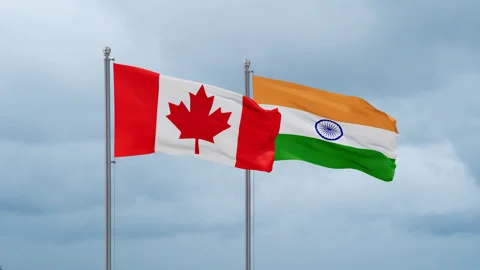By: Surjit Singh Flora
 (THE ASIAN INDEPENDENT, UK)-
(THE ASIAN INDEPENDENT, UK)-
The murder of Khalistan separatist Hardeep Nijjar has further complicated the already contentious relationship between Canada and India. At the same time, there are indications regarding its potential direct influence on the trade relations between the two nations.
Given the fragile nature of India-Canada relations, Punjabi Indian immigrants in Canada naturally develop deep affection for their homeland. The second home for Punjabis is Canada. Punjabi students number in the thousands in Canada. The death of separatist leader Hardeep Singh Nijjar froze relations between the two countries. India takes Canada’s ties with murder inquiry diplomats seriously.
Recently, both nations have declared their intention to recall their diplomats. It is undeniable that the process of obtaining visas has become increasingly challenging following the withdrawal of ambassadors by both nations. Consequently, it is understandable to have concerns for Indian immigrants who have relocated to Canada in pursuit of permanent residency.
Canadian officials have also expressed anxiety about economic relations and said they are determined to maintain trading connections with India despite challenges. We will collaborate closely with all Canadian businessmen in India to uphold this crucial economic partnership, stated Canada’s Trade Minister Mary NG.
Nevertheless, she emphasized that Canada will not accept occurrences of intimidation, extortion, or any harm directed toward its citizens. Certainly, the Government of Canada is prepared to engage in discourse with India and is keen to uphold significant relations.
After Trudeau took office, business connections between the two countries have remained regular, according to analysts. Now that the Canadian general election is almost a year away, pro-Khalistan leaders are pressuring Prime Minister Justin Trudeau to maintain his power for the vote bank.
The Indian market has billions of dollars for Canadian investors. According to the research, 600 Canadian companies operate in India, and over 1000 do business there.
The CPPIB owns Kotak Mahindra Bank, Indus Towers, Paytm, Zomato, and Nykaa. Infosys, Wipro, I.C.I.C., and more Indian corporations have US-listed shares. Shapoorji Pallonji Group, Larsen & Toubro, and Piramal Enterprises are CPPIB partners. According to its website, the Canadian global investment firm has invested $6 billion in India by 2022, a significant market.Recently, CDPQ, Kotak Mahindra Bank, Edelweiss Group, Piramal Enterprises, and T. Also S. made exciting investments in Logistics, Azure Power Global, and Apraava Energy. The $300 million private lending platform it launched with a third-party asset manager to invest in India was successful in February 2020.
Due to its large migrant workforce, India receives the most remittances. World Bank estimates put Canada among the top 10 contributors to India in 2023, sending $125 billion. In 2021-22, Canada contributed 0.6% of total income, per the Ministry of Finance.
International students in Canada are 40% Indian, according to the National Foundation for American Policy (NFAP). Statistics show that 13.35 million Indian students study abroad, with 427,000 choosing Canada.
There are 1.4 million individuals of Indian descent. Sikhism ranks as the fourth-largest religious community in Canada, comprising nearly 800,000 followers, which accounts for 2.1% of the nation’s population as of 2021. Ontario hosts the most significant Sikh populations in Canada, with British Columbia and Alberta following closely behind. The ongoing drought has the potential to engender additional challenges and conflicts for this community. This is the most concerning matter.
Indian immigration to Canada rose 326 percent from 2013 to 2023, from 32,828 to 139,715 people. Canadian political specialist and Carleton University professor Stephanie Carwin called Canada’s fresh claims serious. Relations with India may deteriorate. He told Al Jazeera that this makes Canada’s predicament worse.
Canada supplies India with pulses, newspaper, wood pulp, potash, iron scrap, copper, minerals, and industrial chemicals, while India exports diamonds, jewelry, precious stones, medicines, ready-made clothing, mechanical equipment, petrochemicals, engineering goods, iron and steel products, etc.
Experts say Canada’s bilateral trade with India isn’t substantial enough to damage India’s business. India can simply boost commerce with Australia and others. Despite the major political confrontations, the Global Commerce Research Initiative (GTRI) reports a decline in commerce between India and Canada. The primary reason for this decline is the private nature of trade, and neither India nor Canada have imposed regulations on commodities or services.








